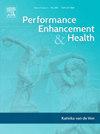Gaming for fuel: A content analysis of energy drink advertising in esports
IF 3.7
Q2 HOSPITALITY, LEISURE, SPORT & TOURISM
引用次数: 0
Abstract
The rise of esports has drawn major energy drink brands such as Monster, Red Bull, and G Fuel, which strongly promote their products for boosting gaming performance. Their aggressive promotion however raises concerns about health risks, such as heart disease, high blood pressure, and sleep disturbances linked to caffeine, sugar, and other stimulants. Despite the prevalence of energy drinks in esports, little research examines their advertising strategies. This study explores key themes and advertising strategies used in video advertisements such as persuasive appeals, peripheral and central messaging routes, and social norms and expected outcomes. Peripheral cues, such as vivid imagery and celebrity endorsements, were consistently utilized across advertisements, while central route cues, like product details, were less commonly emphasized. Subjective norms, including endorsements from gaming influencers, played a significant role in promoting social acceptance. A large majority of advertisements focused on portraying a "cool" and "trendy" image to resonate with their target audience. The findings reveal the alignment of energy drink marketing with esports culture but raise ethical concerns due to the omission of health risks. These methods are akin to alcohol and tobacco advertising and may promote excessive consumption among young gamers. Collaboration between esports stakeholders and public health professionals is essential to advocate for ethical marketing, consumer education, and regulatory oversight to mitigate health risks.
以游戏为燃料:电子竞技中能量饮料广告的内容分析
电子竞技的兴起吸引了Monster、红牛(Red Bull)和G Fuel等主要能量饮料品牌,它们大力宣传自己的产品能提高游戏表现。然而,它们的积极推广引发了人们对健康风险的担忧,比如心脏病、高血压、咖啡因、糖和其他兴奋剂引起的睡眠障碍。尽管能量饮料在电子竞技中很流行,但很少有研究调查它们的广告策略。本研究探讨了视频广告中使用的关键主题和广告策略,如说服性呼吁、外围和中心信息传递路线、社会规范和预期结果。外围线索,如生动的形象和名人代言,在广告中一直被使用,而中心路线线索,如产品细节,则不太常被强调。主观规范,包括来自游戏影响者的认可,在促进社会接受方面发挥了重要作用。绝大多数广告都专注于塑造一个“酷”和“时髦”的形象,以引起目标受众的共鸣。研究结果揭示了能量饮料营销与电子竞技文化的一致性,但由于忽略了健康风险,引发了道德问题。这些方法类似于烟酒广告,可能会促使年轻玩家过度消费。电子竞技利益相关者与公共卫生专业人员之间的合作对于倡导道德营销、消费者教育和监管监督以减轻健康风险至关重要。
本文章由计算机程序翻译,如有差异,请以英文原文为准。
求助全文
约1分钟内获得全文
求助全文
来源期刊

Performance enhancement and health
Social Sciences-Health (social science)
CiteScore
4.70
自引率
0.00%
发文量
27
审稿时长
57 days
 求助内容:
求助内容: 应助结果提醒方式:
应助结果提醒方式:


